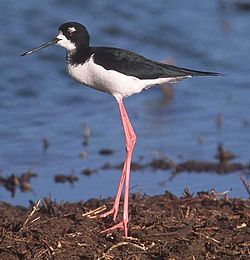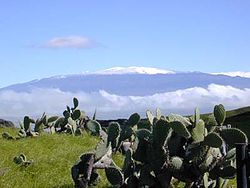
These are the National Natural Landmarks in the U.S. state of Hawaii .
| Name | Image | Date | Location | County | Ownership | Description |
|---|---|---|---|---|---|---|
| Diamond Head |  | Honolulu | Oʻahu | State Monument | Towering exposed basaltic cinder code, located within the middle of Honolulu's urban core. | |
| ʻĪao Valley |  | Wailuku | Maui | State Monument | Eroded volcanic pinnacles covered in vegetation and surrounded by a lush rain forest. | |
| Kanahā Pond |  | June 1971 | Kahului | Maui | State Wildlife Sanctuary | A brackish water bird refuge. |
| Koʻolau Range Pali |  | Oʻahu | State & private land | Faulted, eroded mountain range is the remnant of a shield volcano. | ||
| Makalawena Marsh |  | June 1972 | North Kona | Hawaiʻi | State Park | Located in Kekaha Kai State Park, site supports endangered birds such as the Hawaiian stilt. |
| Mauna Kea |  | November 1972 | Saddle Road | Hawaiʻi | Federal & state land | 11,000 foot mountain is the world's finest example of a shield volcano. |
| North Shore Cliffs |  | December 1972 | Molokaʻi | Maui | State & private lands | Contains steep, eroded volcanic cliffs. |